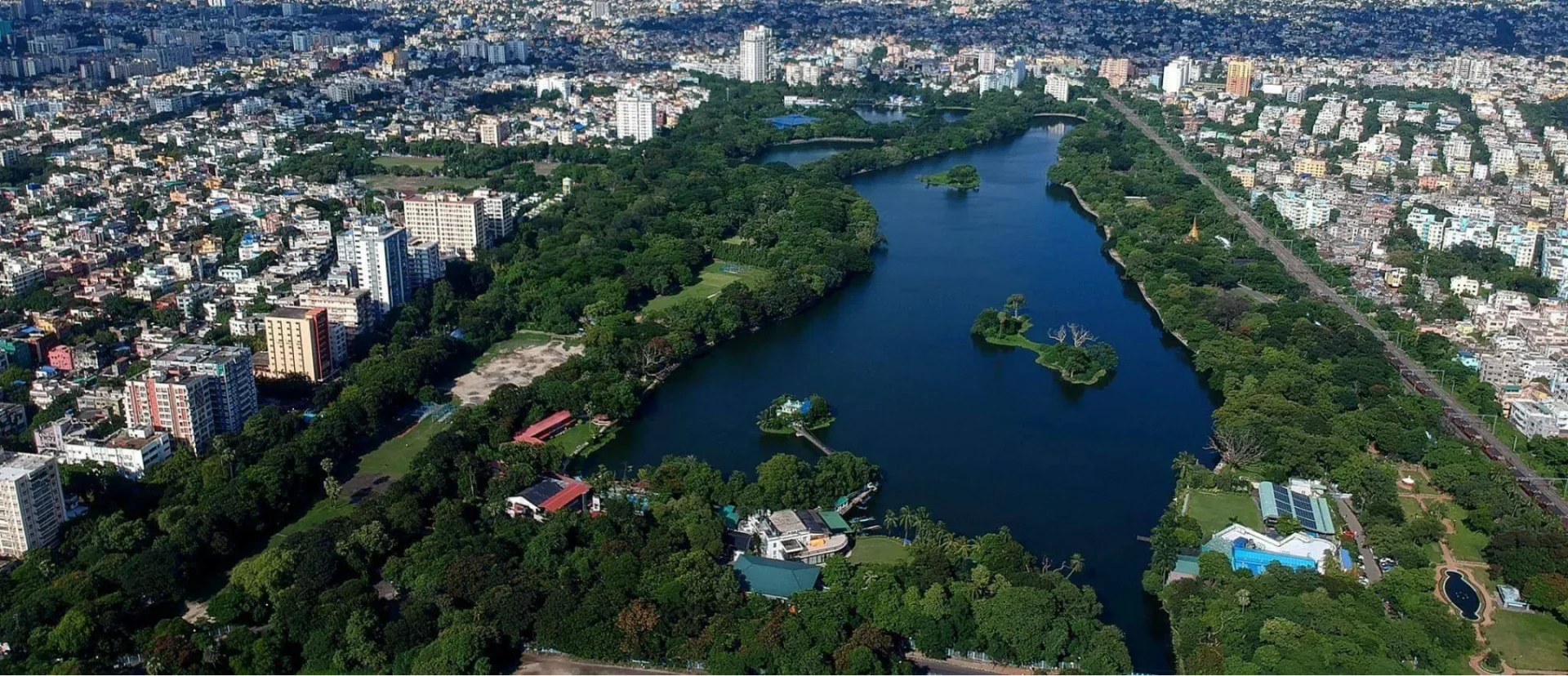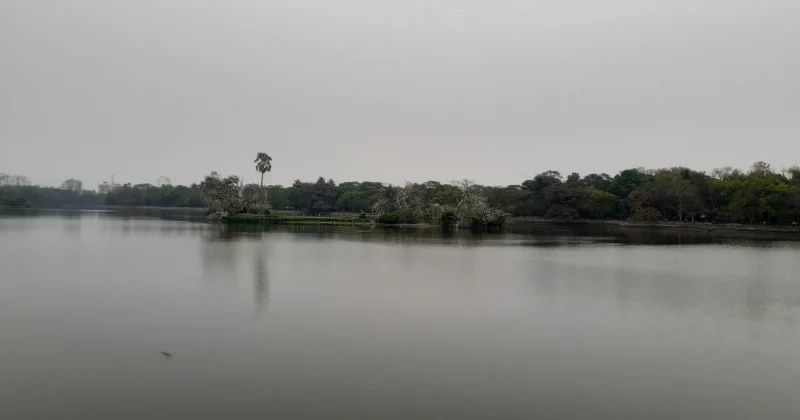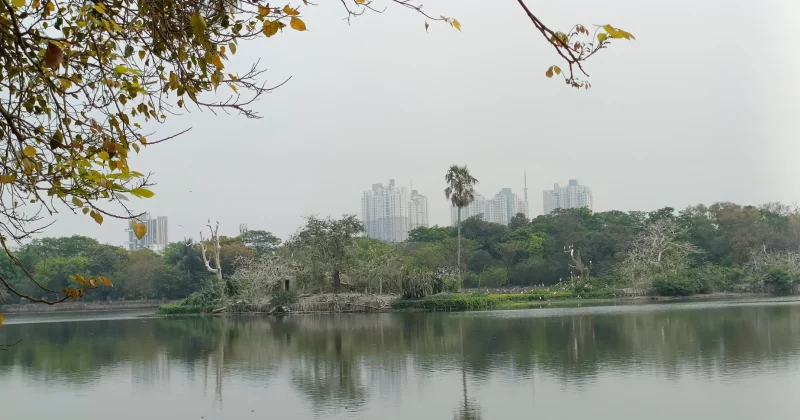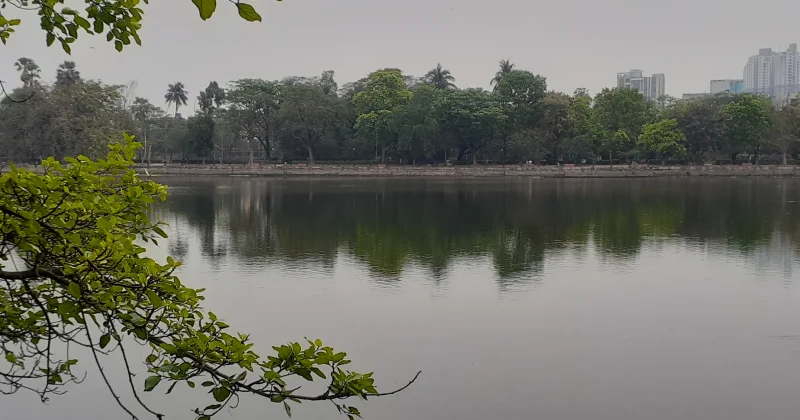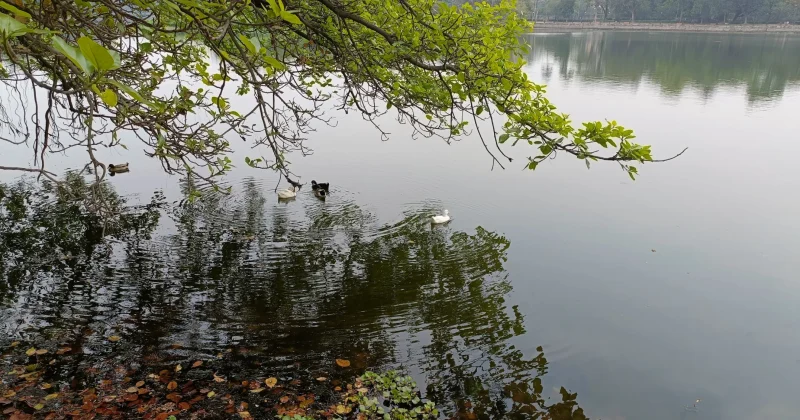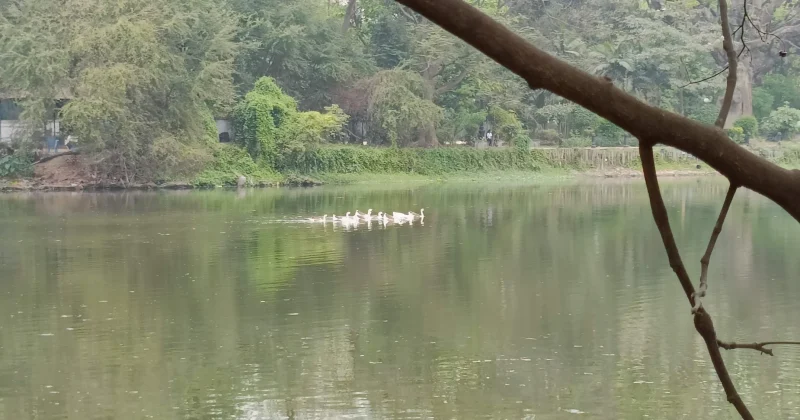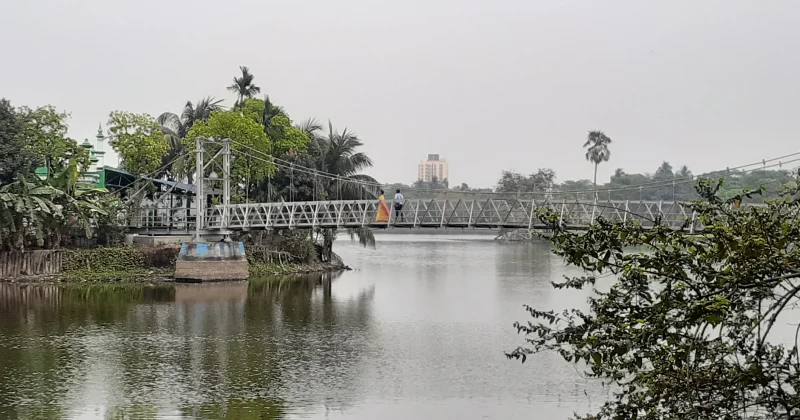Originally called Dhakuria Lake since it is in the Dhakuria neighbourhood of south Kolkata, Rabindra Sarobar was excavated by the erstwhile Calcutta Improvement Trust (CIT) as part of the city’s southward expansion. It is now an important and uniquely relevant environmental and bio-reserve.
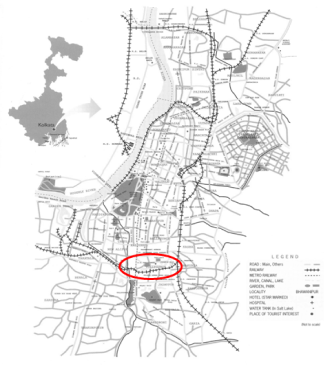

Area Distribution of Rabindra Sarovar Lake

Total Area
192 acres
Leased out land area
42 acres
Tree Density (1989)
27.5 per acre
Tree Density (2007)
19.0 per acre
Inception
“The picturesque landscape surrounding the (then) Dhakuria lake resembled 18th-century English gardens, complete with an informal layout, tree-lined water’s edge, and islands.”
The concept of the Rabindra Sarobar was conceived in 1916-17 and its plans were carried out in the 1920s by the CIT (later Kolkata Improvement Trust or KIT) in the low-lying village of Mudiali in south Kolkata. The idea was part of a road development and urban greening scheme. Today, a street to the northeast of the Sarobar is named South End Park Road—a toponymic reminder of the city’s past.
The CIT maps presented here are about 20 years apart and testify how a well-developed urban planning initiative can be brought to fruition. The second map (1938-39) marks the Rabindra Sarobar, as ‘Excavation Area Acquired’. The Southern Avenue Road development is a contiguous scheme and is marked as CIT scheme no. XLVII in the map (Chattopadhyay, 013).
The picturesque landscape surrounding the (then) Dhakuria resembled 18th-century English gardens, complete with an informal layout, tree-lined water’s edge, and islands. In 1926, a cable suspended bridge was erected by Burn & Co., Howrah, to connect the mosque-island to the mainland. The area surrounding the lake was designated to house several recreational facilities under CIT Scheme LXXIV in May 1958, and was renamed Rabindra Sarobar as a homage to Kabiguru (Guru of poets) Rabindranath Tagore (1861-1941), the first Nobel Laureate of West Bengal and, indeed, of India.
The maps displayed here show the before-after development of the area and how a once rural settlement transformed into the present-day road network, the lake, and its adjoining residential neighbourhood.
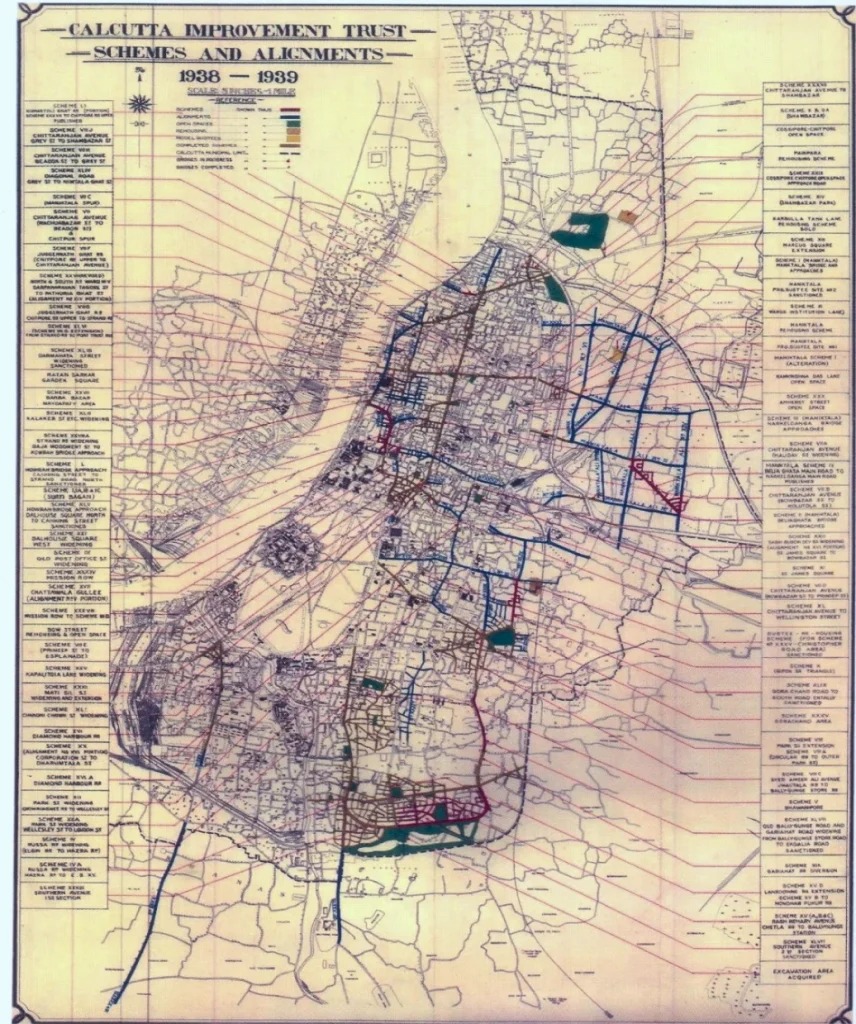

Infrastructure Evolution around the Rabindra Sarovar
Upon being renamed, Rabindra Sarobar underwent the following interventions:
1962: The cable suspended bridge was strengthened by Burn & Co., Howrah.
Early 1960s: A 26,000 seating capacity stadium was built in the northwest corner.
1980: A 3,500 seating capacity open air theatre (OAT) was set up.
1985-89: A toy train was installed and operated; the tracks of which still circumscribe the lake.
1991: The OAT was converted into a covered auditorium for the 10th International Film Festival in Kolkata and named Nazrul Mancha.


The Pristine Natural Beauty of Rabindra Sarovar
History and Culture
During early excavation, the CIT unearthed historic cannons, believed by some to have belonged to the Nawab of Murshidabad and used during the 1756 siege of Calcutta. Yet, others believe that these cannons might have been found elsewhere and were brought to the Rabindra Sarobar as part of added ‘ornamentation’ (WBPCB, 2017).


Nature Reserve
Rabindra Sarobar comprises a total of five waterbodies, of which two large waterbodies constitute the main lake with the eastern one being the largest. Their average depth is about 4.0 metres, with some deeper pockets (JU report, 2007). A fenced off lotus pond lies to the north, while the two water bodies are used for swimming. The lakes have quite a few islands and most of these are undisturbed eco-habitats. Hosting a variety of tree species, the Rabindra Sarobar is a paradise for nature lovers.

Active and Passive Recreation
Today, the Rabindra Sarobar is a recreational hub with a multitude of social clubs engaged in the sports, rowing, and swimming. A cricket academy with practice grounds, a safari park with a children’s play area, and a laughter club have also been established. While walkers and runners are a regular sight in the mornings, several choose to take a stroll or sit quietly by the lakeside. Given its rich diversity of trees, birdwatching and bird photography have also emerged as popular hobbies and the park has achieved a strong social media presence.

Ecology and Environment
Rabindra Sarobar is the much-needed green breathing space amidst the dense concrete jungle, a cool pocket on a ‘heat island’. The aquatic and terrestrial ecosystem services and the environmental benefits that are derived from Rabindra Sarobar are immense and innumerable. A treasure trove of urban biodiversity, it reestablishes a connection with nature and induces biophilia (what’s this mean?) and mental wellbeing.

A Journey of Endurance
Recognizing the ecological and environmental significance of the lake, the National Lake Conservation Programme of the Government of India declared Rabindra Sarobar a National Lake in 2003, the first lake in West Bengal to receive this status.
Rabindra Sarobar has endured much over its history. It has seen encroachments, land and water pollution, legal battles fought by environmental activists for a pollution-free habitat, and in 2006 (something missing here, a legal case or..?) finally ensuring the Sarobar become a squatter-free site.
In 2007, a multi-disciplinary team of experts from Jadavpur University conducted a study of Rabindra Sarobar at the behest of the Kolkata Improvement Trust (KIT) and prepared a Comprehensive Rejuvenation Plan (CRJP) for the lake and its adjoining park. An overall assessment of land use, water, landscape, and environmental challenges was carried out based on which a phase-wise landscape development roadmap and guidelines were prepared. With a central theme revolving around Tagore’s philosphy, the CRJP aimed to address the spatio-physical, socio-cultural, ecological, environmental, and economic challenges with its innovative three-tiered concept including the proposition of ‘Fee-zone and Free-zone’ for better management.
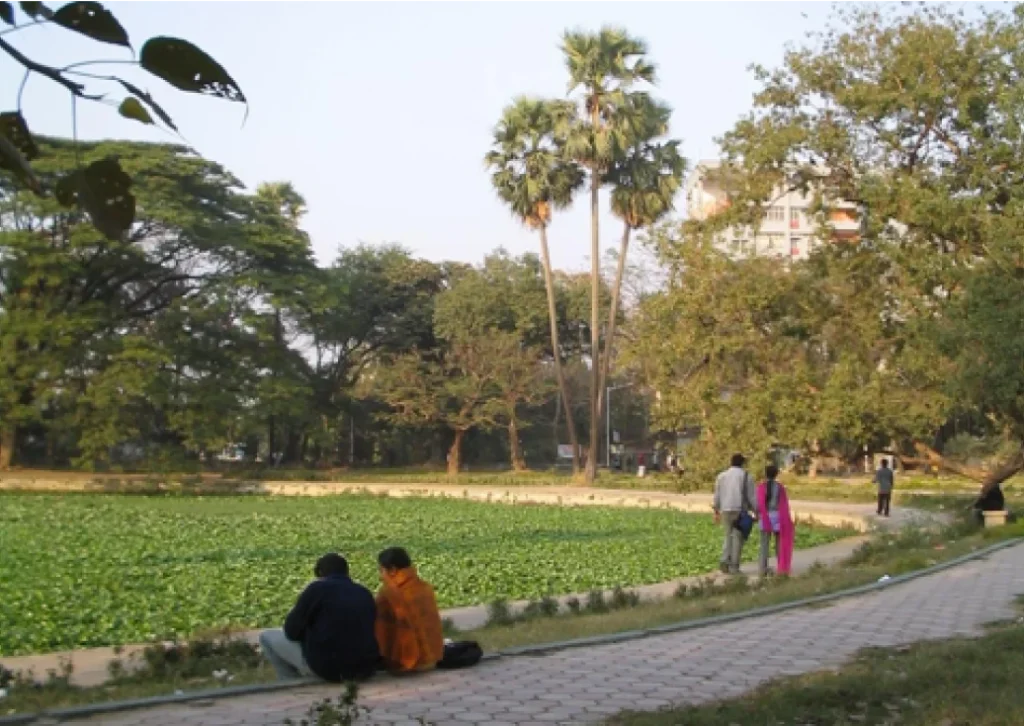
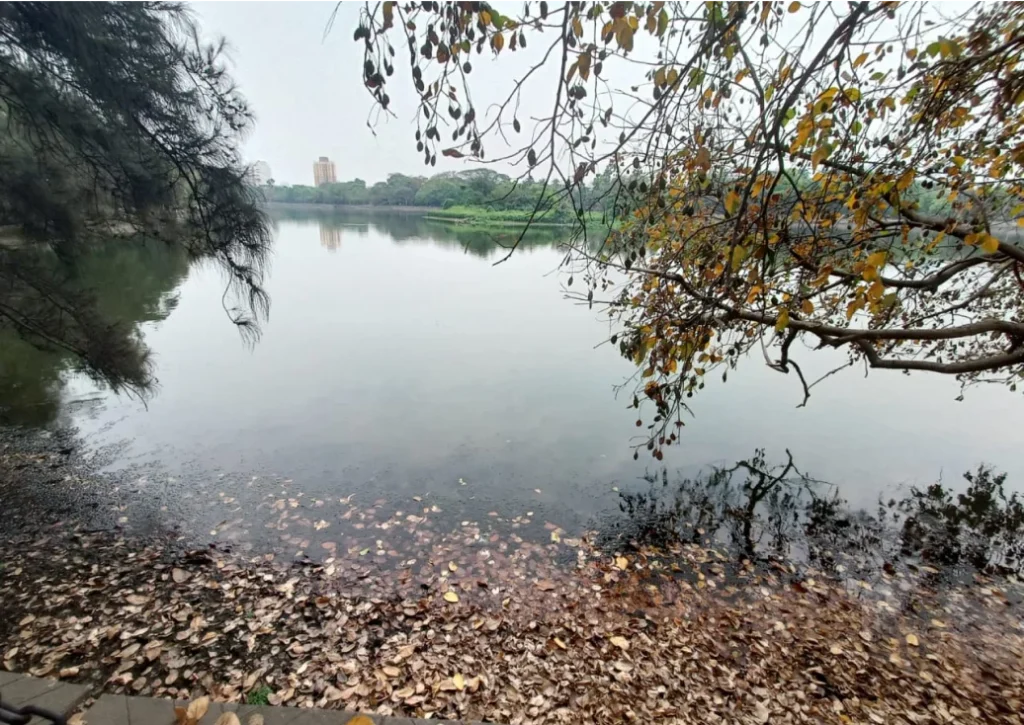
Land uses within Rabindra Sarovar Park Area, 2007

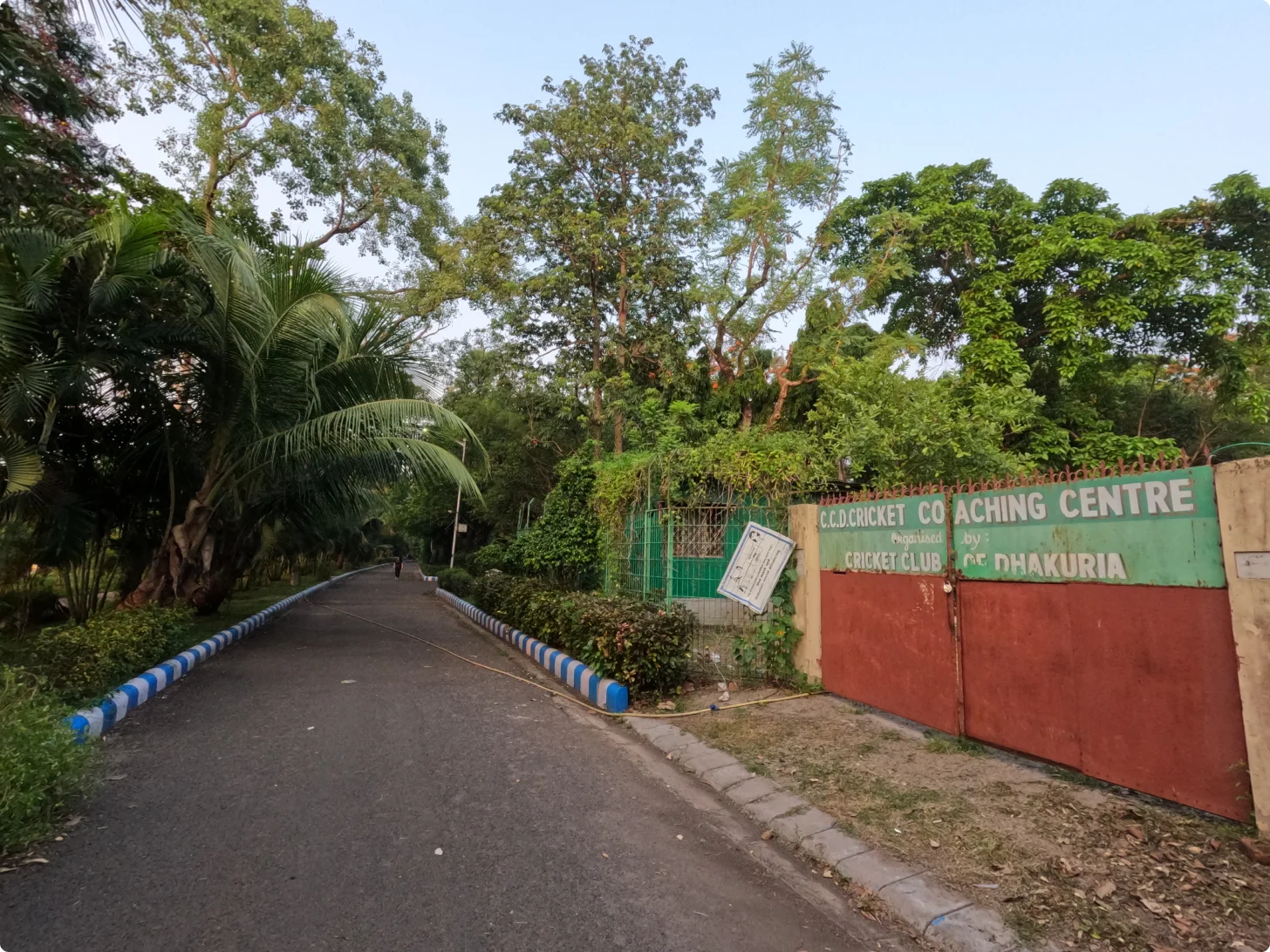
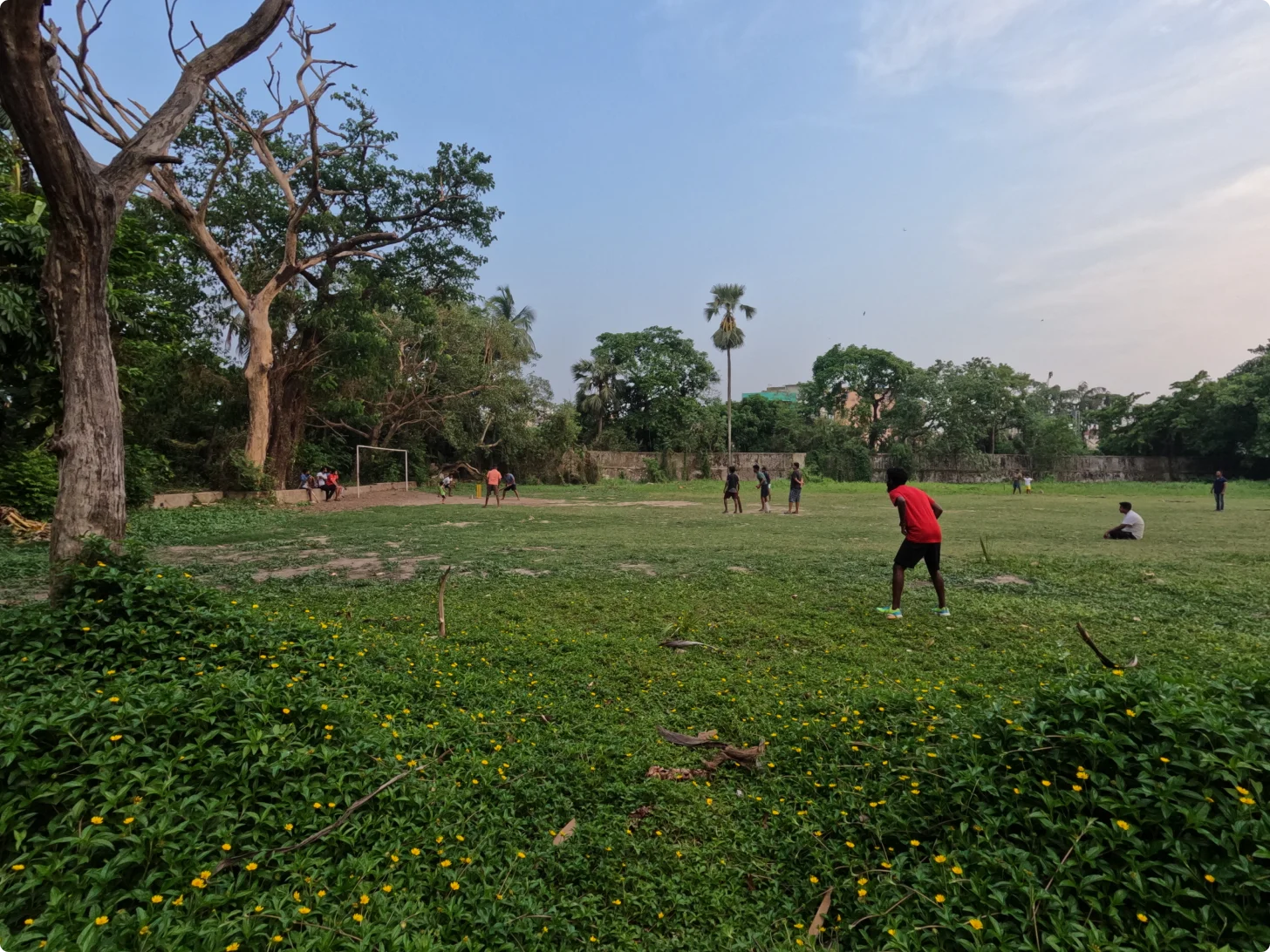



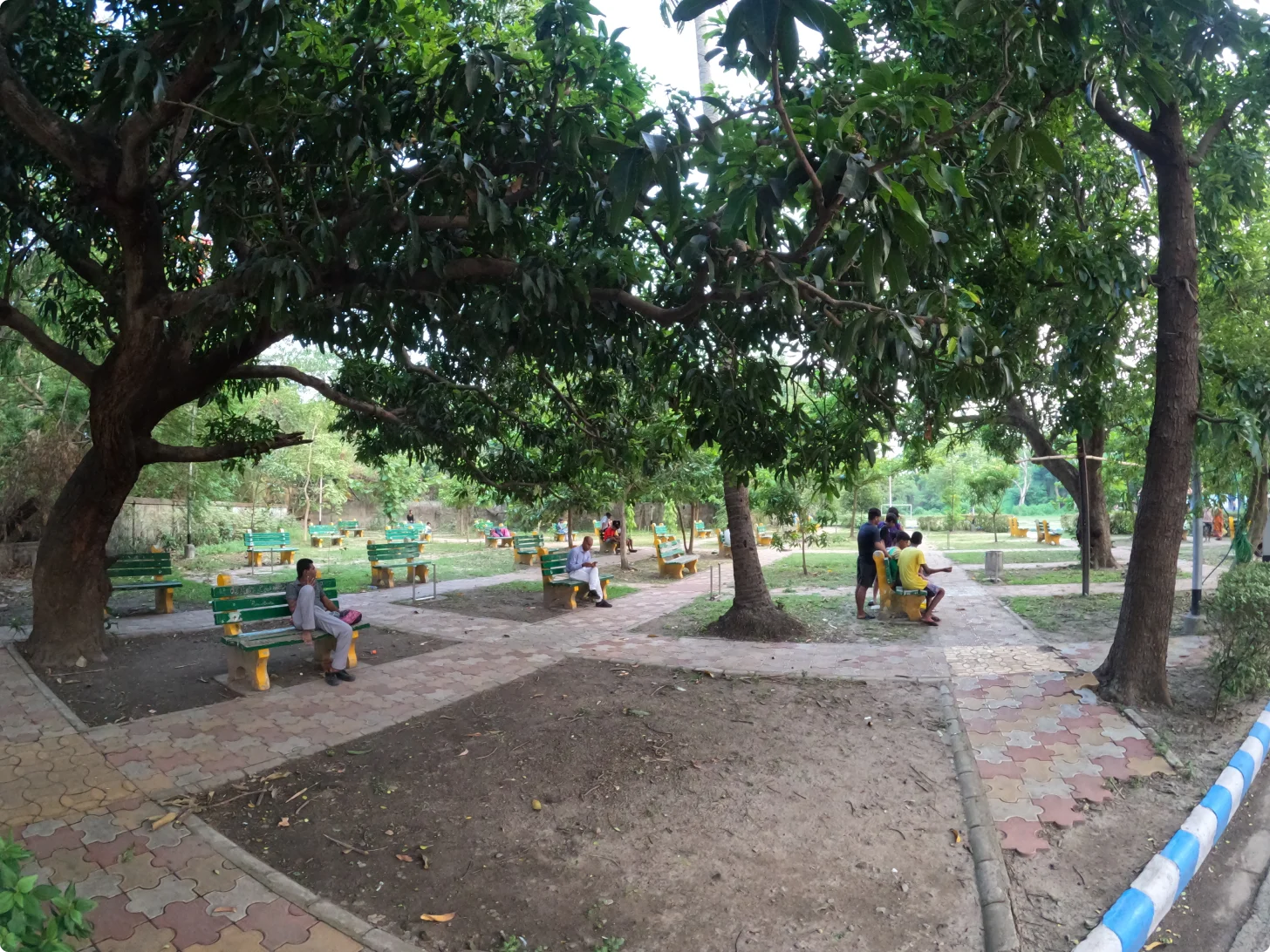
Proposed Comprehensive Landscape Plan, 2007







A Promising Present
A decade later, in 2017, an Environmental Impact Assessment study was carried out by the West Bengal Pollution Control Board (WBPCB) on a National Green Tribunal (NGT) order. This study (WBPCB, 2017) reported a total of 366 species of terrestrial vascular plants, identified from Rabindra Sarobar and its premises. This included 162 trees—eight lianas, 14 climbers, 46 shrubs and 136 herbs. The 366 species were distributed under 277 genera and 43 families.
This is a marked improvement from the 2010 study reported in the same document, as a total of 152 species of vascular terrestrial plants of 73 tree species, 2 lianas, 4 climbers, 7 shrubs and 66 herb species, under 127 genera and 53 families.
Besides trees, the study has also recorded 57 butterfly species, 107 bird species (69 resident, 23 long-distant migrant, 14 local, 52 migrant, and one summer visitor), and 40 freshwater fish species. These are important bio-diversity indicators and show that the rejuvenation plan has been working well.

Rabindra Sarovar at Dusk


Way Forward….
The past developments in the lake area were conceived mainly as engineering projects (Mody and Saraogi, 1989) and a creation of recreational amenities to generate revenue. However, at the turn of the millennium, a changed climatic context demands careful attention to the ecological and cultural values of the site with clear environmental conservation goals.
Although the lake environment has undergone remarkable improvement in the past few years, the occasional onslaught on the lake’s ecosystem, intense public activities in the park, the over-illumination of certain pockets, damaged green cover, and pollution are critical causes of concern.
Augmenting plantations and a continuous care of the existing greenery with the core objective of ecosystem restoration is key to help this century-old national lake ensure its long-term sustainability.
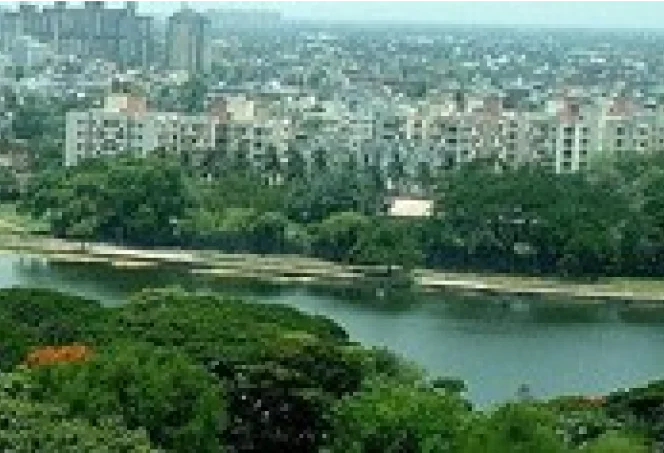
References
- Chattopadhyay, M., (2013), Paschim Banger Porikalpita Nagarayan.
- Centre for Science and Environment,cases-on-protection-of-lakes-2556
- Centre for Science and Environment Rabindra-sarobar-to-be-declared-national-lake
- Facebook group on ‘Biodiversity of Rabindra Sarobar’.
- Jadavpur University, (2007), Report on Comprehensive Rejuvenation Plan (CRJP) for Rabindra Sarobar.
- Mody Russi and A Saraogi, (1989), A Plan for Integrated development of Rabindra Sarobar, Calcutta, Unpublished Monograph.
- WBPCB, (2017), Environmental Impact Assessment Study Report on Rabindra Sarobar Lake Premises, Kolkata, 2017; File-30.pdf
- KMDA, (2015), RfP document for ‘Provision of cleaning of lake and…. ….Rabindra Sarobar’.
UNESCO, (2021), durga-puja-in-kolkata-00703

